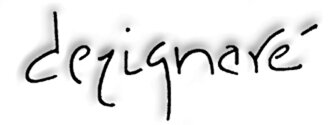|
Color boards represent a collection of finishes and furnishings utilized on a particular project for a specific client. Most are presented on 36" W x 24" H boards because they are easy to store, transport and handle. A large project may require several boards. They often show representative samples, photographs or renderings of the actual materials being used on a project including furnishings, finishes, fabrics, wall coverings, floor coverings, cabinetry details and other samples of articles to be used on a project.
Giving your board a 3-D quality adds interest. Items can be sampled and then raised off the base board with additional board layers underneath. Some fabrics have very large repeats and small samples do not truly represent the selection. These fabrics can be attached from behind and draped over the board to accurately display the selection.
If furniture is represented on a board, it may be best to make black and white images of the pieces, since manufacturer's illustrations do not match up in scale and may include colors not being used within your scheme. It is important to represent samples in the proportion in which they will be utilized and provide consistency throughout the presentation. This can be achieved by making photocopies or by scanning a photograph. De-saturate the color in the image and scale images to the correct size.
Other alternatives include creating your own rendering of a piece. Images can be blown up to as large as 11 x 17 on a computer and printed in black and white or color with a glossy or matte finish. Images can also be applied to 100% rag barrier paper and rendered in color using colored pencils, markers or watercolor pencils for renderings. Watercolor pencils can be applied dry to dry paper, wet to dry paper or dry on dampened paper, depending on the desired affect. An ink rendering on vellum can be printed onto Mylar and colored from the back for strong line quality and color representation. Images can also be printed onto canvas.
Spacing is a critical element when displaying multiple selections. Be sure not to crowd them together and to provide ample white space between groupings of selections. Overlapping finishes which will be utilized in tandem often works well. Grouping finishes of a particular space together, if you are representing more than one area on a single board, will help the viewer understand relationships of the materials you are utilizing. Make sure all printed material is large enough to read and refrain from using all CAPS.
Your finished product can be sprayed with Crylon or protected with shrink-wrap, especially if you suspect it will be handled. Shrink-wrap protects from dust, fingerprints and lost samples.
MATERIALS
Gator Board is a premium hard surface mounting material and because of its stiffness, it is ideal for larger presentations. It comes in a wide variety of colors and matching crescent papers are also available. Illustration Board is a paper surface mount, available in many finishes (often referred to as "museum board"). Foam board is a soft material available in 20x30, 24x36, 32x40, 40x60, 48x48, and 48x96.
There are several cutting tools; the most common being the Exacto knife. Board cutters are available to create 45° or 90° angles and a Rabbet cutter will cut 3/16" thick board leaving a ridge for butted corners. This is ideal for creating models.
For detail work Rapid Tapes are available for borders, lines or patterns. These come in solid colors and are available in widths from 1/64" to 1/2" widths. Clip art can also be utilized for decorative borders and other images you find appropriate to your presentation.
Images can be dry mounted or applied with almost any type of glue, but one of the most effective materials is Studio Tac which is available in sheets up to 23" x 31". This material allows you to reposition an application without damaging your format. Studio Tac is primarily designed for paper applications. Elmer's Glue works for mounting carpet samples, while 3M double-sided foam tape works well for mounting tile samples.
Laminating permanently seals a clear sheet of polyester film, with a glossy or matte finish, to all types of paper or dry-mounted prints. Prints can be laminated on one or both sides in sizes up to 42" wide by almost any length.
Several books are available at the following online bookstores:
Design Drawing Techniques : For Architects, Graphic Designers, and Artists by Tom Porter, Sue Goodman - This title is out of print.
Composite Drawing : Techniques for Architectural Design Presentation by Mohammed Saleh Uddin / Hardcover - 208 pages (January 1997)
Portfolio Design by Harold Linton, Steven Rost (Photographer) Hardcover - 151 pages (August 1996)
Writing for Design Professionals : A Guide to Writing Successful Proposals, Letters, Brochures, Portfolios, Reports, Presentations, and Job Applications by Stephen A. Kliment, Hugh S. Hardy/ Hardcover - 232 pages (November 1998)
A Handbook for Interior Designers by Jenny Gibbs / Paperback - 128 pages Reprint edition (September 1997) www.barnesandnoble.com
Interior Design Visual Presentation : A Guide to Graphics, Models & Presentation Techniques by Maureen Mitton / Paperback - 224 pages (March 1999) A guide to presentation materials and techniques for design graphics, models, and presentation techniques which explains the visual materials and methods available for every stage of the design process. Instructions and examples show techniques, presentation types and styles.
Our thanks go to Clark Bradley and Laurie Allen of Miller Blueprint Company, 501 W. 6th St., Austin TX 78701 for their assistance and expertise in helping us prepare this article.
- Dezignaré
|
